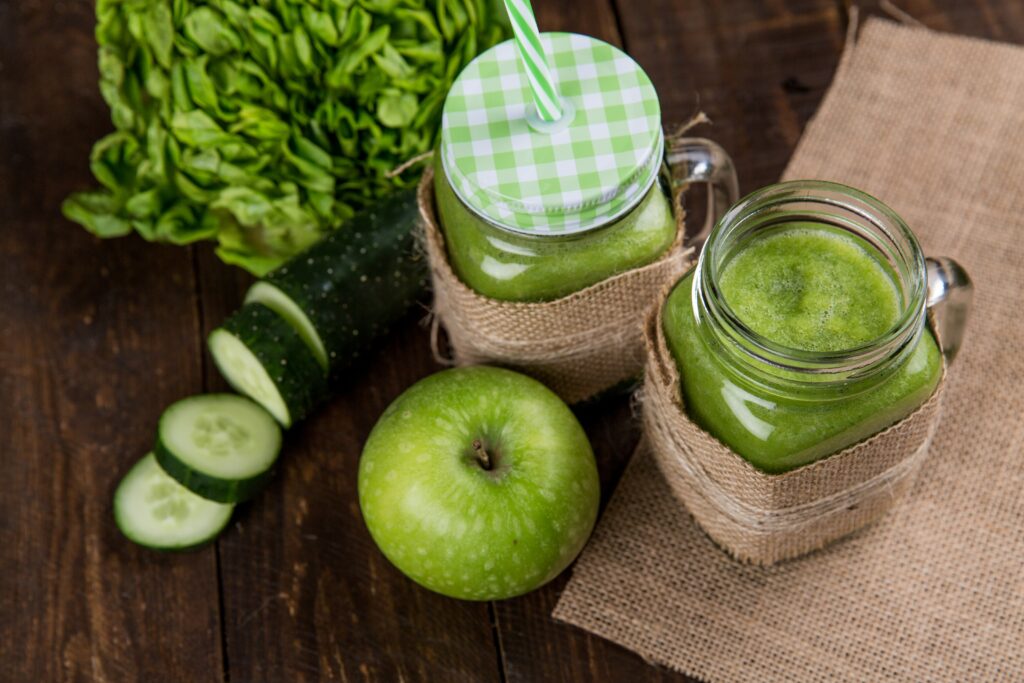A juice cleanse, often known as a juice fast, is a detox diet consisting of drinking only vegetable and fruit juice for a short period, usually one to three days.

Juice, according to proponents, floods the body with healing nutrients while also eliminating toxins and waste. It is also supposed to promote the body’s natural detox processes by removing sugar, caffeine, processed meats, and other energy-depleting elements from the diet. However, there is a shortage of data to back up these claims, and any weight lost during a juice cleanse is likely to be restored as normal eating habits are resumed.
What Experts Have to Say
“Juice cleanses, in particular, lack fiber, which helps limit your hunger and aids your body’s ‘cleansing’ process. As a result, any weight lost is likely to be regained, and consuming simply juices will leave you hungry.”
Diet Plan for 7 Days
A normal cleanse lasts one to three days, but it is frequently preceded by a three to five-day preparatory stage followed by a post-cleanse transition back to a solid-food diet (two to three days).
- Day 1: Eliminate coffee, refined sugar, meat, dairy products, wheat, alcohol, and nicotine gradually during the preparation phase to prevent headaches, cravings, and other withdrawal symptoms throughout the cleanse.
- Day 2: Continue to abstain from the foods specified. Increase your consumption of fresh veggies, fruits, and fluids.
- Day 3: Consume as little as possible of the banned foods while increasing your fruits, veggies, and water intake.
- Day 4: When the detox starts: 8 oz. green vegetable juice; 8 oz. smoothie with almond milk and berries; apple (if hunger pains are persistent or bothersome); 8 oz. vegetable broth; 8 oz. carrot, beet, and apple juice
- Day 5: 8 oz. green vegetable juice; 8 oz. coconut milk and pears smoothie; small salad without dressing; 8 oz. green vegetable juice; a small portion of carrots and celery; 8 oz. ginger, apple, and cucumber juice
- Day 6: Eat light after the detox. Reintroduce foods gradually over many days.
- Day 7: Continue introducing tiny amounts of calories and previously banned meals.
What You Can Consume
A juice detox relies heavily on raw (unpasteurized) organic juice. Juices can be created from scratch or purchased. Drink room temperature or lukewarm water between each juice or meal to aid elimination.
Organic food is preferred by proponents of juice cleanses. Smoothies and other healthy foods can be added or substituted for individuals who need more calories. Some folks may eat raw or vegan food exclusively, whereas others may only eat gluten-free meals and snacks.
Vegetables and fruits
Fruits and vegetables used in juice production, as well as raw veggies for snacking, include:
- Milks made from nuts
- Milk made from almonds
- Milk made from cashews
- Milk made from coconut
Gluten-Free, whole Foods
If you are hungry during a cleanse, prepping for a cleanse, or transitioning off a juice cleanse, gluten-free, vegan meals and snacks may be recommended.
- Grain (whole)
- Every fruit and vegetable
- Tofu and other soy products
- Lentils with beans
What You Shouldn’t Eat
The most stringent juice cleanses forbid all solid meals and any liquids that are not produced from compatible fruits, vegetables, and nut milk.
Products derived from animals
- Processed and non-nutritional foods
- Sugar Caffeine Sugary drinks or sweets
- Foods that are fried
- Alcohol
